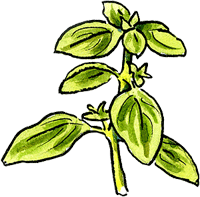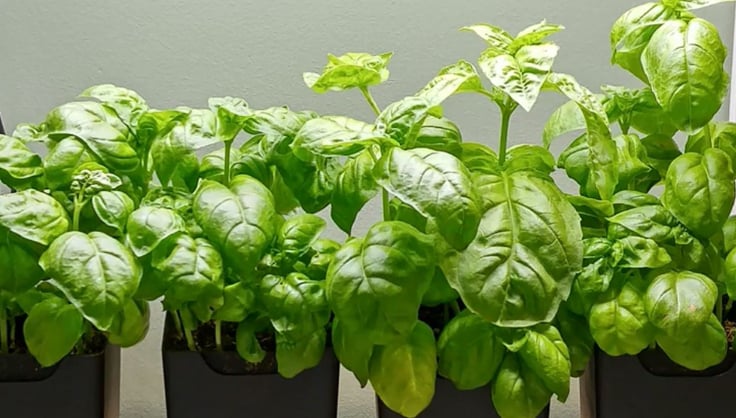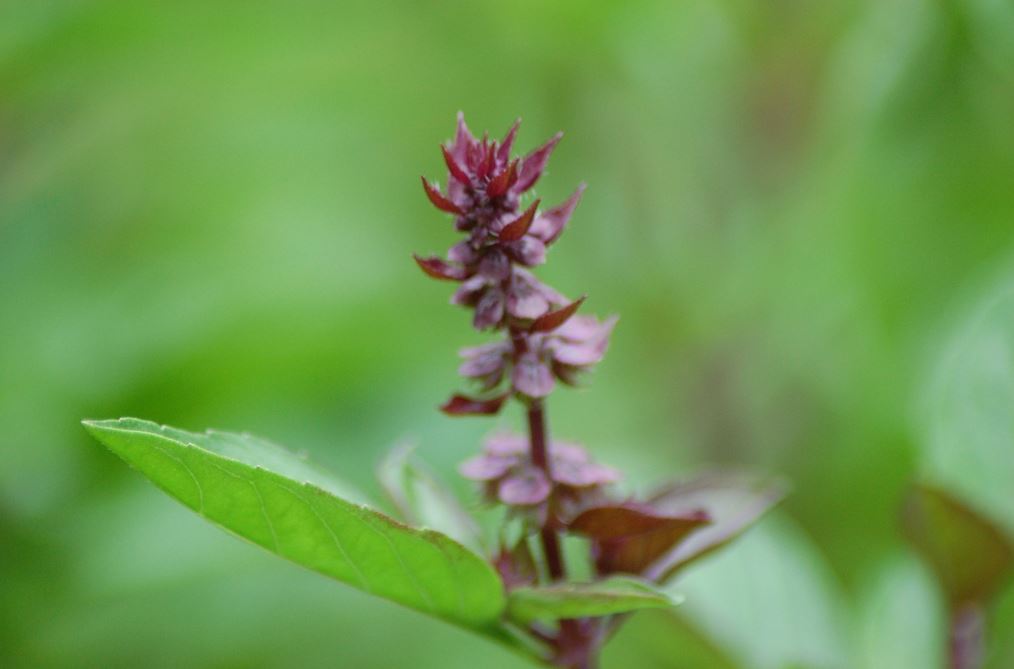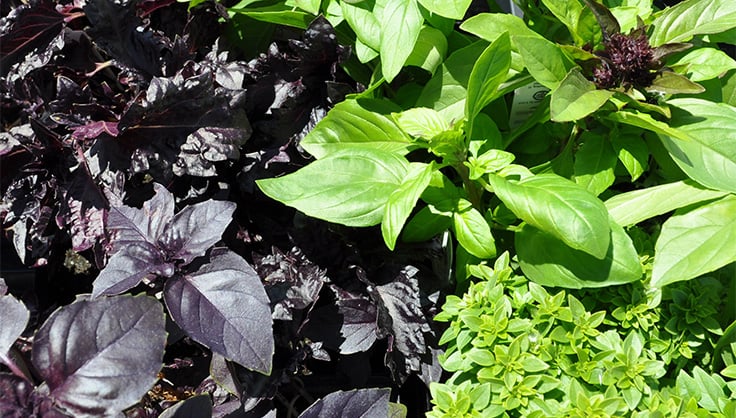Basil
 Beneficial ladybugs keeping pests at bay on basil
Beneficial ladybugs keeping pests at bay on basilBasil is one of the most versatile herbs you can grow. Freshly picked leaves can be added to salads, sandwiches and sauces, and can be made into pesto or dried for use in the winter.
Basil has a lower germination rate than many seeds, averaging just 60 percent. Fortunately, most seed packets contain many more seeds than you'll need. Basil is a hot weather plant and is especially susceptible to frost damage. Seeds and plants should not be put into the ground until the soil is warm (65 to 70 degrees) and the weather has settled. Even a cool, 50 degree night will slow down the plant's growth for some time afterwards.

To get a jump on the basil season, you can start your basil seeds indoors, 3 to 4 weeks before planting time. Put 4 to 6 basil seeds in a pot. Once the seedlings have their first set of true leaves, thin to 1 or 2 plants per pot. Basil transplants well, but the plants will appreciate being protected from wind and sun for the first several days.
Basil prefers growing in a lightly moist, slightly acidic, well-drained soil that contains lots of organic matter (like compost!). Like most herbs, basil is not a heavy feeder, so there is no need to add any fertilizer to the soil around your plants. Basil is a good companion for tomatoes as it will tolerate being shaded as the tomato plant matures.
The standard culinary basil, typically used for pesto and Italian cooking, is called Genovese. There are more than 3 dozen other types of basil, including those with purple leaves, ruffled leaves, and specialty varieties with overtones of lemon, cinnamon and lime.
To get the highest yield of tender and flavorful basil leaves, pinch back the tip of each branch, starting in early summer when the plants are just 6 inches tall. Continue pinching back the branches (as you harvest the leaves), pinching off any flowers that start to form. If the plant is not allowed to flower and set seed, it should continue producing high quality leaves right up to frost.
Last updated: 01/28/2021
Print this Article:
Related Articles
Get the Dirt
Stay up to date on new articles and advice. Please fill out the information below.



